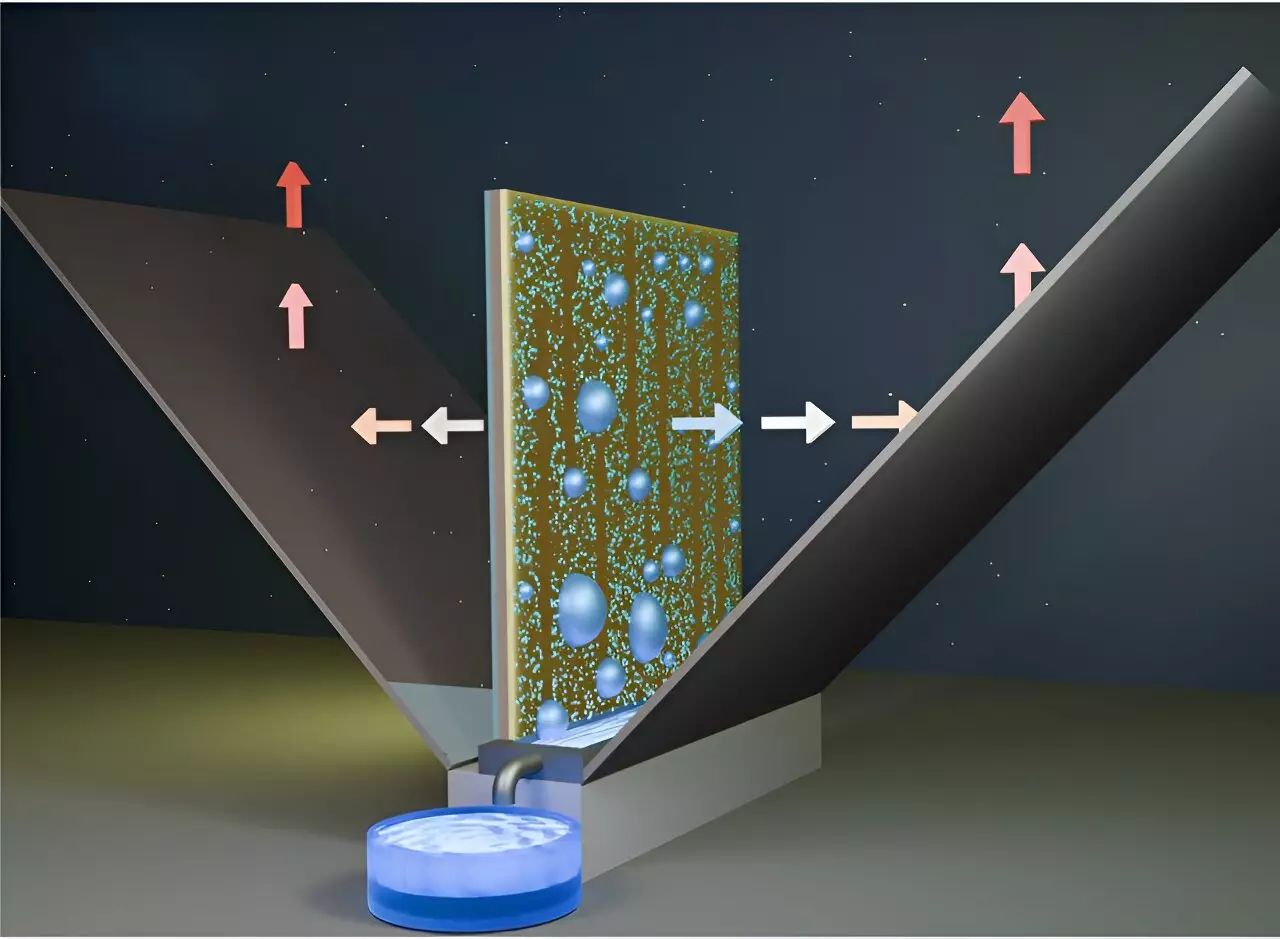Saudi Arabia stands on the brink of a renewable energy revolution, having invested heavily in solar power technology. With an abundance of sunlight, solar energy contributes over 80% to the Kingdom’s renewable energy framework, positioning it as a potential leader in energy exportation. However, the reliance on solar energy brings forth an intriguing paradox: the very solar cells designed to harness sunlight face significant overheating challenges. This necessitates cooling systems to maintain their efficiency, yet many of these systems depend on electricity, ironically increasing energy consumption.
Recognizing the pressing need to address both energy extraction and sustainability, a research team from King Abdullah University of Science and Technology (KAUST), led by Professor Qiaoqiang Gan, has devised a groundbreaking solution that operates completely off the grid. This novel approach not only tackles the cooling issue but also proposes a method for water collection, addressing water scarcity in arid regions.
A Passive Solution to Water Scarcity
The innovative device developed by Gan and his team leverages gravity to extract water from the atmosphere, utilizing inexpensive and widely available materials. This method stands out in arid environments like Saudi Arabia, where conventional atmospheric water harvesting techniques often rely on electricity, making them less viable in remote areas with limited power infrastructure.
According to Gan, the atmosphere holds approximately six times more water than all of Earth’s rivers combined. “This water can be harvested using atmospheric water collection technologies,” he states. However, existing technologies typically require significant energy inputs, which may deter their use in rural locales where energy costs are prohibitive.
One notable breakthrough by the team is the application of a specialized lubricant coating formulated from a blend of commercial polymers and silicone oil. This innovation tackles a common issue where water droplets tend to cling to device surfaces, reducing collecting efficiencies. Postdoctoral fellow Shakeel Ahmad emphasizes that the addition of this coating removes the pinning of droplets, allowing for true passive collection that is solely dependent on gravitational forces.
The research builds upon a previous innovative design by Gan, referred to as “vertical double-sided architecture,” which reflects thermal heat away from solar cells, thus mitigating overheating problems. Although this previous technology was effective for cooling, the aspect of water collection was not originally a component. The new device, tested over a year in Thuwal, north of Jeddah, promises to enhance water collection rates, nearly doubling those achieved by traditional harvesting systems.
The trials underscore the device’s remarkable efficiency, exhibiting a significant increase in water yield without consuming electricity. Moreover, the absence of mechanical components such as compressors or fans translates to lower maintenance costs, signifying not only energy savings but also an economically sustainable approach.
The fusion of solar energy collection and atmospheric water harvesting represents more than just a technological advancement; it illustrates a pathway towards sustainable development in parched regions. The capabilities of this device extend beyond cooling solar panels—it can also be harnessed for agriculture, irrigation, and cooling buildings, amplifying the benefits of both solar energy and water availability.
This innovation marks a pivotal moment in Saudi Arabia’s energy landscape, aligning with global trends towards environmentally sustainable practices. The potential economic implications are profound; as the nation pivots to a model that harmonizes energy consumption and water needs, it could pave the way for a more resilient economy.
The collaborative effort by KAUST researchers showcases an inspiring model of scientific ingenuity that addresses pressing challenges—one that could revolutionize how regions like Saudi Arabia approach energy and water management. As the Kingdom positions itself as a key player in global renewable energy markets, the integration of such innovative solutions will be crucial in establishing a sustainable future.


Leave a Reply